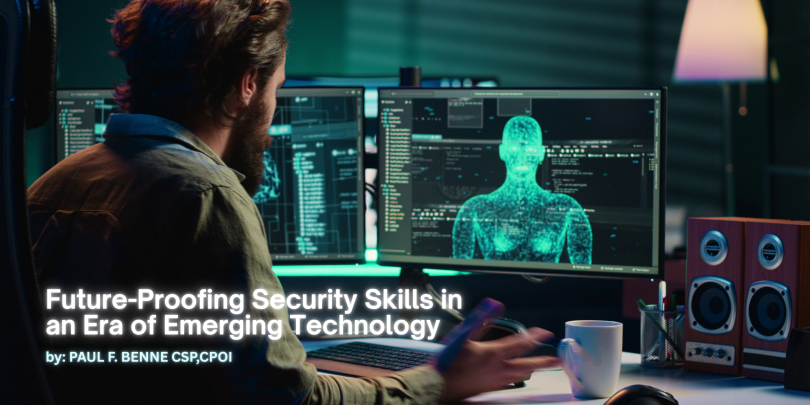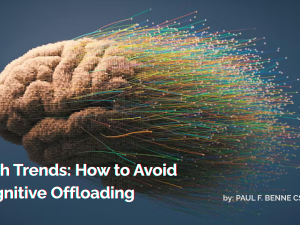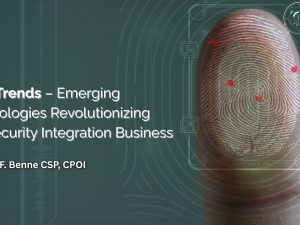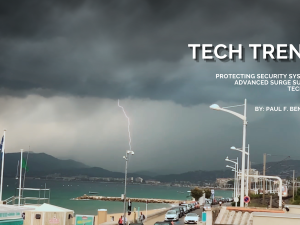In today’s world of rapidly advancing AI and data analytics, security technology is evolving faster than job descriptions! For security professionals to remain valued and relevant, their skillsets must evolve, too. Knowing about the latest technologies is not enough. Survival will require security integrators and in-house practitioners to shift their mindset – from reactive to proactive – and understand how to apply the latest technologies in meaningful, cross-functional ways.
Underused Tools
As an independent security consultant, I’ve seen first-hand that many security professionals have fallen behind. Organizations invest in sophisticated technology, only for teams to use it for just the most basic tasks. It’s like buying a Ferrari but driving it like a Pinto.
In the past, the cost of underutilizing systems was mostly financial, due to resulting inefficiencies. Today, the stakes are higher. Cameras are analyzing patterns and alerting you to potential threats. Access control isn’t just locking doors—it’s enforcing compliance, understanding traffic flow, and integrating with other departments. When security teams ignore these capabilities, they miss chances to prevent incidents, improve operations, support strategic goals, and elevate their department’s influence.
Security Can’t Stay in a Silo
Security professionals have lived in a pretty tight silo for decades. Now, we need to think bigger. To start, we must ask better questions.
- What can this technology do?
- Who else might benefit from the data we’re already collecting?
- Can this help the facilities team spot maintenance issues?
- Can it help HR analyze workspace usage?
- Can it support emergency preparedness in ways we haven’t considered?
As an integrator, this means showing up with more than just spec sheets. Clients are looking for guidance on broader use cases. And for security end-users, it means looking for partners – both vendors and internal stakeholders – who can help maximize the ROI of your systems.
Industry Expertise Drives Value
Of course, how these technologies are applied — and which opportunities matter most — will vary significantly by industry. In healthcare, for instance, one challenge is managing the movement and security of critical medical equipment. Technologies like access control, video analytics, and asset tracking can work together to ensure that crash carts and other mobile equipment are only moved by authorized personnel.
In the K-12 vertical, predictive models can detect conditions that are often precursors to trouble and allow staff to intervene before an incident occurs. A crowd forming in the hallway may indicate a fight is brewing. Somone walking in the parking lot with a firearm can trigger numerous lockdown events, like securing doors and notifying the police, so that a response occurs instantaneously instead of in the aftermath of an event.
In a retail environment, the focus might be on understanding traffic flow, maximizing display space, reducing checkout lines, and improving the overall customer experience.
These industry-specific challenges illustrate why future-ready security professionals need more than technical knowledge — they need a deep understanding of the verticals they serve. They must know how people move through space, what pain points exist, how decisions are made, and what information solves problems.
SOCs Reveal the Gap Between Technology and Mindset
SOCs are a great example of where we’ve invested in modern systems but kept outdated workflows. I’ve seen facilities with brand new technology still operating like it’s 1990. Operators sit in front of walls of screens with no intelligence guiding them, no automation prioritizing what matters, and no outside data informing their decisions.
We’re now working with clients to change that. Our team is developing frameworks to help SOCs incorporate more intelligence – from open-source data feeds and AI analytics – that push relevant, timely information to operators. The goal is to move from passive monitoring to proactive decision-making. We want operators to act faster and with greater confidence, whether they’re dealing with a protest, a fire, or something else developing blocks away.
The Real Skill is Connecting the Dots
There’s much you can do to future proof your security skill set, but my best advice for staying ahead of emerging technology is to focus less on mastering every new tool and more on strengthening how you think. Get better at diagnosing problems, understanding workflows, and asking sharper questions. Spend time learning from other industries. Surround yourself with people who challenge your assumptions — not just security peers, but operations, IT, and business leaders.
Most importantly, when evaluating technology, don’t just ask what it does. Ask what else it could do. The future won’t reward those who know the most specs — it will reward those who know how to connect the dots.







